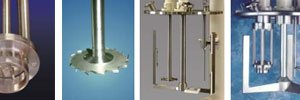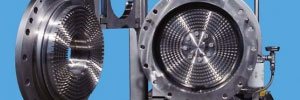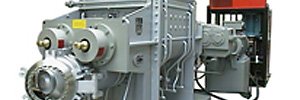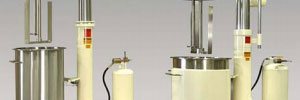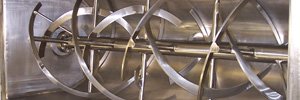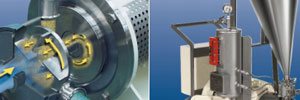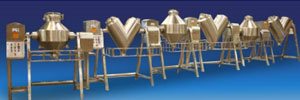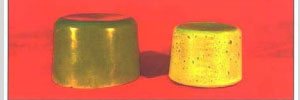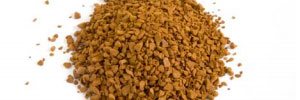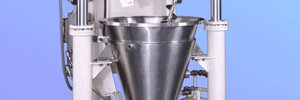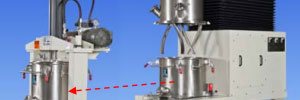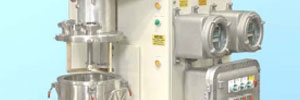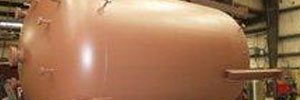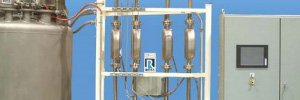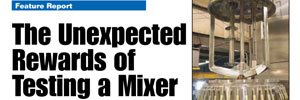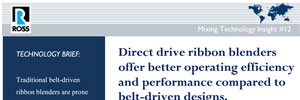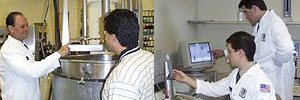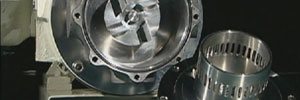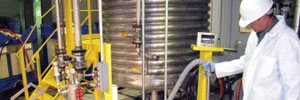Ross Double Planetary Mixer with HV Blade Design Solves Problems in Mixing Ultra High Viscosity Sealants
Thursday, May 16, 2019
PROBLEM:
High Viscosity Silicone Polymer Mixed in the Ross Double Planetary Mixer equipped with HV Blades
A major manufacturer of silicone sealants was looking to make a new, highly filled, silicone sealant. The desired product has a viscosity of over 9 million centipoise and is very “sticky”. This posed several problems for manufacturing the new sealant with their Double Planetary Mixer with rectangular stirrer blades:
- The "sticky" nature of this material results in the batch climbing up the blades into the gearbox and hood area where it is not being mixed, and creating an unnecessary mess.
- Silica powder added to the top of the batch takes a long time to incorporate into the batch.
- Lowering the mixer blades into the high viscosity material is difficult.
- The viscosity of the material is beyond the capabilities of the mixer.
SOLUTION:
The Ross HV Planetary Blades were developed to meet the demanding requirements of mixing extremely high viscosity materials. This design enables the Ross Double Planetary Mixer to mix products that would normally be considered far beyond the capabilities of most Double Planetary Mixers.
HV Planetary Blades consist of two helical blades that are designed to rotate on their own axes while revolving around a common central axis. The HV Blades each provide a downward motivation to viscous materials, which prevents the common phenomenon of viscous materials “climbing” upward and out of the mixing vessel, into the headspace of the mixer hood.
The helical design of the HV Blades makes them self-wiping, as there is always a downward moving point of contact between the two blades. A kneading action between the blades is created which helps to promote the dispersion of solids in viscous media. This mixing action is very useful for the incorporation of powders from the surface of the batch as well as providing good top to bottom turnover within the batch.
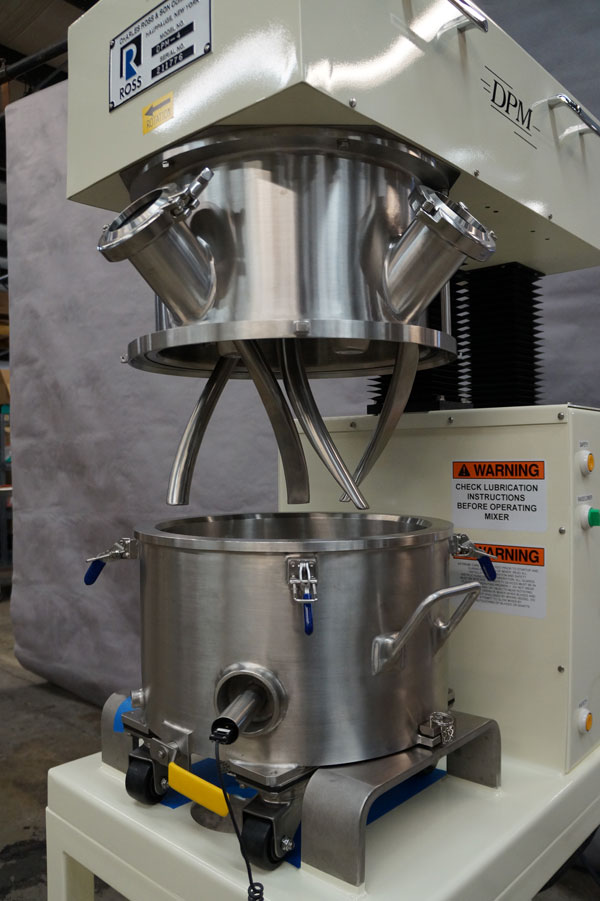
Ross Double Planetary Mixer with HV Blades
PROCESSING:
For the processing of this sealant, the silicone polymer and other liquid ingredients are added to the mix can. The starting viscosity of the liquid is approximately 20,000 centipoise. The powdered fillers are added to the surface of the liquid . Vacuum is pulled on the batch before the mixing begins.
The finished product is a smooth, air-free silicone sealant with a viscosity of over 9 million centipoise.
CONCLUSION:
The Ross Double Planetary Mixer equipped with HV Blades is capable of mixing materials that are normally considered beyond the viscosity capabilities for Planetary Mixers. The increased viscosity range of the HV Blades enables the Double Planetary Mixer to be a viable, low-cost alternative to Double Arm mixers for many applications.

